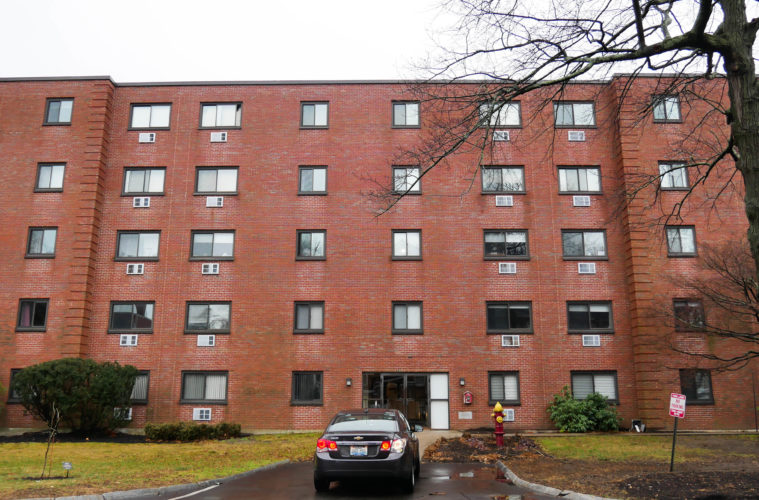Young residents had mastered the art of bypassing the new security measure in the buildings’ elevator. After the installment of the first card-reader device, the fourth and fifth-floor students adopted a system that finessed stair use altogether. Ricky Shearman, a resident of the fifth floor, said “we were sitting in our room one day, and I was like ‘maybe it would be cool if we started a group message.’” The chat originally included nine people and was specifically created for sending the elevator down for their floormates. When someone was inside the elevator, they couldn’t scan their ENC ID or press any buttons unless they had medical permission. However, the card-reader only required being scanned on the first floor so residents without a medical need could use the elevator going down. Shearman said, “if anyone needs a send, we try to help each other out.”
Along with the fifth floor, many residents on fourth also have a group message where they would request the elevator. The fifth-floor group message developed a point system in which every week, they would do rankings for those who did the most send-ups.
Before the first card-reader installation, Christian Hughes, Resident Director of Young and Munro, sent an email on November 2, 2019 to all Young residents discussing future elevator access. In order to preserve the aging elevator, it would no longer be open to all residents; only those with medical permission. Young residents were not pleased with this announcement and a flurry of agitated emails was sent back as students were being stripped of their elevator privileges.
Up until early November, elevator usage had been open for all Young residents. Hughes explained in his first email that the elevator had been undergoing an upgrade for a card-reader access device. This process had been delayed since the semester began, which is what kept the elevator open for all Young residents. In early September, a written notice was placed on the outside of the elevator to prevent continued usage. However, the card-reader company didn’t follow through until early November. Young residents ignored all signs and continued to use the elevator.
In the chain of emails, most residents had satirical responses to express their discontent with the future of the Young elevator. Others were blunt in expressing the inconvenience and disbelief about having to use the stairs. The responses were sent to all residents in a thread of memes and sarcastic humor. In receiving these emails, Hughes says, “I felt glad that it did open up the conversation.” He continued to add, “I like having those conversations and being able to see what are the things that students are frustrated about or want to see change, so that I can be like ‘Ok, these are things for me to focus on.’”
As of this semester, a second card-reader is now installed, increasing building security and cardio among Young residents. With the addition of the second reader, the doors would not open unless a medically approved resident scans from the outside. Once inside, they must scan their ID again on the first installed card-reader in order to press their floor button. Considering the placement of the second device, residents are finding it more difficult to avoid the stairs. When you’re on the top floors, “you have to send the elevator up, send it back down, and then send it back up,” says Ricky Shearman.
He also adds, “it kind of killed our group message.” The second and unannounced card-reader may have decreased elevator use, but the Young residents have proven their resilience. If there’s a will, there’s a way.
As of January 30, 2020, Elisabeth Moreau, director of Residential Life and Housing, sent an email indicating that Young residents will now have access to the elevator. The battle of the elevator is officially over.

